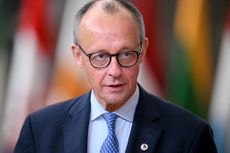Emerging Markets
The latest news, updates and opinions on Emerging Markets from the expert team here at MoneyWeek
-

Go for growth: how to invest in emerging markets
Developing countries offer investors compelling long-term economic prospects, says David Prosser
By David Prosser Published
-

MoneyWeek experts' best investments for the next 25 years
MoneyWeek's experts predict the best investments for the next quarter-century. Tips range from defence and agriculture to Vietnam and Jardine Matheson
By MoneyWeek Published
-

'My predictions for the next 25 years'
Opinion What will the world look like when MoneyWeek celebrates its 50th birthday? Matthew Lynn shares his predictions
By Matthew Lynn Published
Opinion -

What MoneyWeek has learnt in the last 25 years
Financial markets have suffered two huge bear markets and a pandemic since MoneyWeek launched. Alex Rankine reviews key trends and lessons from a turbulent time
By Alex Rankine Published
-

MoneyWeek Wealth Summit 2025: investing for a volatile era
MoneyWeek's 25th birthday conference’s agenda offers investors a wide array of compelling themes
By MoneyWeek Published
-

Europe’s new single stock market is no panacea
Opinion It is hard to see how a single European stock exchange will fix anything. Friedrich Merz is trying his hand at a failed strategy, says Matthew Lynn
By Matthew Lynn Published
Opinion -

Emerging markets boast top growth stocks at bargain prices
Opinion Lim Wen Loong, investment director at Ashoka WhiteOak Capital, selects three growth stocks where he’d put his money
By Lim Wen Loong Published
Opinion -

Investors have overlooked emerging markets' top innovators
Opinion Carlos Hardenberg, portfolio manager, Mobius Investment Trust, highlights three emerging market stocks where he’d put his money
By Carlos von Hardenberg Published
Opinion -

Is it time to ride the recovery in emerging markets?
Interview What's the outlook for emerging markets? Gustavo Medeiros, head of research at Ashmore Group, gives his analysis and reviews progress in developing economies
By Andrew Van Sickle Published
Interview
